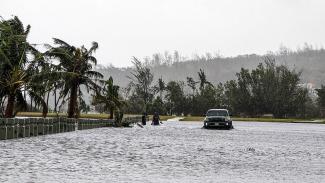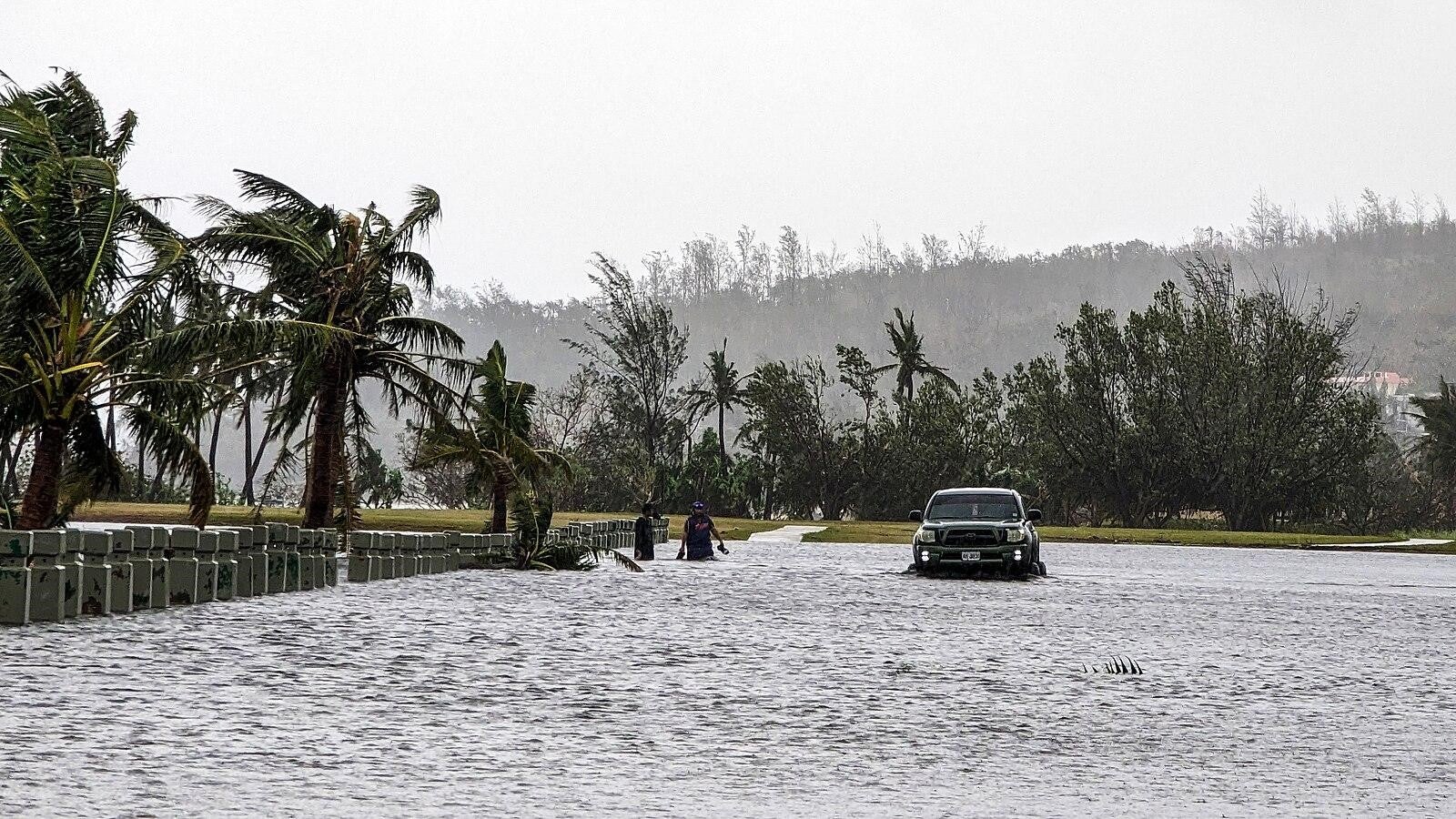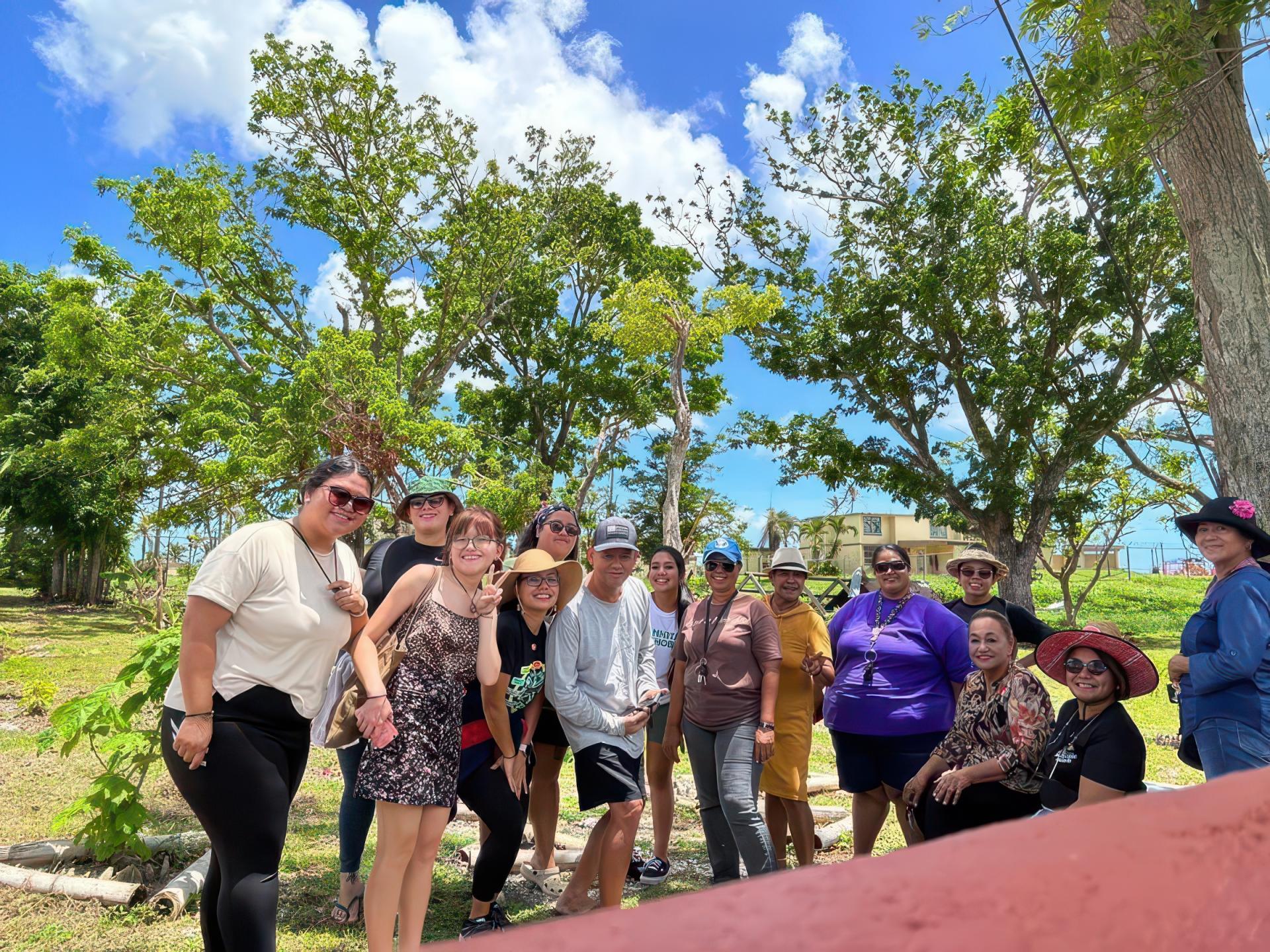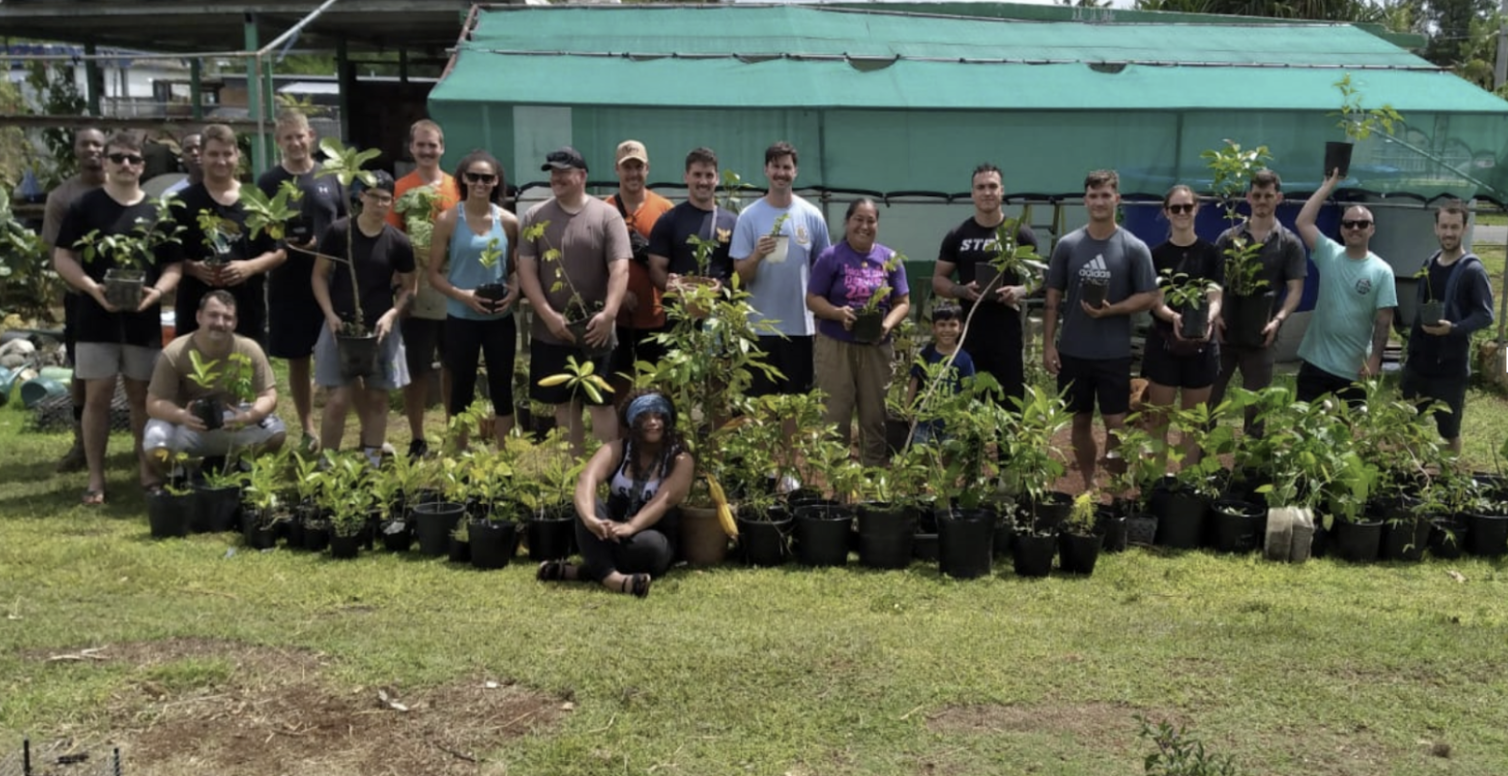
On May 24, 2023, Typhoon Mawar found its way to the Mariana Islands. It was a 140 mph, category 4 typhoon as it moved between the two southernmost islands in the chain, Guåhan (Guam) and Luta (Rota). The eye’s southern wall passed over much of Guåhan, delivering the most extreme winds to the island’s northern region. Luta was just inside the radius of the typhoon’s winds, which caused a number of downed trees and defoliation. Some power poles fell, wooden and tin structures suffered partial wind damage, and power and water were lost during Mawar’s passage. In Guåhan, the impacts were more extreme. There was serious wind damage to vegetation and trees. Many news outlets repeatedly described the damage as, “What used to be a jungle looks like toothpicks.” Power lines were downed, roads were left impassable due to flooding or debris, concrete structures were damaged by flooding and wind, and wooden or tin structures were demolished. Almost the entire island was left without power, water, and cellular communication, which took several months to fully restore. Two people died in swimming accidents.
The typhoon originated south-southwest of the Truk (Chuuk) Lagoon, moved through Wa’ab (Yap), and then reached the Marianas. On May 25, Mawar continued west-northwest to the Philippines, Taiwan, and the Okinawa Islands. It was one of the strongest tropical cyclones on record for the northern hemisphere in the month of May and the strongest cyclone in the world in 2023.
Disaster response in Guåhan after Mawar was largely led by the Federal Emergency Management Agency (FEMA) and local organizations such as Indigenous Nihi Media, Micronesia Climate Change Alliance, Para Todus Hit, and Guåhan Sustainable Culture. Local organizations kept people informed via social media, raised money for disaster relief, and facilitated volunteer debris cleanups. Individuals and families also did their part to raise relief funds and support recovery on the ground.
Julian Aguon (CHamoru), a writer and human rights lawyer, wrote about conditions in Guåhan post-Typhoon Mawar: “In the northern villages, which were hit hardest, I’ve seen several clans come together—to remove fallen trees from each other’s ranches, to clean each other’s houses, to cook meals for each other’s children. A friend from the northernmost village of Yigo recently recounted how seven of her nephews teamed up to clean all the yards in the family compound, starting with the oldest relatives, followed by those with disabilities.”

Flooding caused by Typhoon Mawar in Guåhan. Source: Wikipedia.
This act of coming together to rebuild is deeply rooted in the Indigenous CHamoru culture. Ancient CHamoru society was centered around interdependent family units. The family structure included extended families and most members lived in close proximity to each other. They worked together diligently to provide security, feed and care for one another, and raise the children. This structure is rooted in a CHamoru value, inafa’maolek, which means to make good, to restore harmony and order. Inafa’maolek is about cooperation, interdependence, and preserving all relationships, human and non-human. It is about putting the collective needs above those of the individual. And it is key for maintaining sustainable, equitable, and culturally relevant climate disaster response.
In 2020, the Guam Forest Action Plan found that the island’s overall jungle, or forest, health was suffering. Approximately 49% of the island’s trees showed damage from animals, insects, weeds, fire, disease, and storms. In the context of climate crisis mitigation, adequate forest management and restoration is an integral part in reducing global greenhouse gas emissions and enhancing overall environmental resilience.
In recognition of this, the Guam Department of Agriculture Forestry & Soil Resources Division launched a subgrant program, Fina’maolek, an annual program that awards grants to individuals or organizations with projects that grow and maintain urban and community forests. In its first year, it was awarded to four organizations with goals of native reforestation and planting medicinal trees. Now in its second year, the newly awarded projects are focused on forest recovery and stewardship. Fina’maolek and inafa’maolek are cognates; they share the root word, maolek, which means good or well. Fina’maolek describes something that makes good or creates harmony, something that improves upon a current situation. It is an apt name for this program.
Another major mitigation effort is found in the expansion of Indigenous healing practices. For many years, lifelong yo’åmte (traditional healer) Lourdes Mangloña, or Mama Lou, has been an active voice and teacher of CHamoru healing practices. It is because of her and other yo’åmte siha that the practice is becoming revitalized in the Marianas. Understanding and using traditional ways of healing help people adapt to environmental changes while safeguarding cultural identities. They connect people with their history and culture and reinforce stewardship of land-based livelihoods. Additionally, traditional medicines are used to protect from various airborne diseases and infections— ailments heavily influenced by environmental changes.

Mama Lou (third from the right, seated) and her students after a day of class at the åmot (medicine) garden. Photo by Chauntae Quichocho.
The climate crisis affects all aspects of our health, environment, economy, and more. Embracing Traditional Knowledge of stewardship and healing is critical to easing our way through the drastic changes that are happening and those still to come. Because of our size, remoteness, and fragile land and marine ecosystems, as islands we can only mitigate so much. As we continue to face some of the most extreme climate consequences, adaptation is key. We will take care of each other during crises and do what we can to ease the losses, but how we adapt to ensure the survival of our people and culture is critical.
Mama Lou was chosen at a young age to learn Indigenous healing and was taught by her grandmother. This reflects the antigu (ancient, traditional) way. One was chosen as a young person, learned the practice from their relatives, and then spent their life making medicine and treating the community. This way of passing down the art of healing in the Marianas has worked for a long time. Today, it doesn’t work as well anymore. Colonization, Indigenous erasure, and environmental changes have forced the people to modify and adapt their cultural traditions in order to keep them alive. We know this and embrace it, and so does Mama Lou.
In 2019, she began sharing her knowledge with a handful of non-relative apprentices. They learned the local medicinal plants and how to process them and make medicine. In 2023, their small group successfully organized a university course series, “Introduction to CHamoru Indigenous Health & Healing.” It was hosted at the University of Guam and open to registered students as well as community members. Although some have criticized this method, saying that it goes against the antigu way, most are grateful to see the support and growth of these healing practices.

One of the 2023 Fina’maolek subgrant awardees, Kurason I Sengsong, preparing for a community volunteer day of native reforestation work. Photo by Kurason I Sengsong.
Another admirable example of adaptation comes from our Micronesian neighbors and relatives, the Republic of Marshall Islands. Their National Adaptation Plan, formulated in 2023, is unique because of the existential climate risk that their nation faces and because of the level of community participation that was involved. More than 1,300 people were interviewed to design the plan across two dozen Marshallese islands and atolls. With goals to protect their low-lying islands from sea level rise and prevent mass climate immigration, their plan is said to be among the most comprehensive for long-term climate adaptation.
Shifts in the climate have been happening for centuries, and the Peoples of the Pacific are attuned to it all. Pacific Islanders are i taotao tåsi (the people of the sea). We are subject to the temperament of the mighty ocean choosing to feed and protect us, or not. This centuries-long, fickle relationship has made us agile and resourceful. It has made us masters of adaptation. We are climate change frontliners, but we are also healers and navigators deeply rooted in our communities. And we will do what we must to survive this climate crisis.
Shaylin Salas (CHamoru) is a 2022 Cultural Survival Indigenous Youth Fellow.
Top photo: Debris along a main road in Guåhan after Typhoon Mawar. Source: Wikipedia.
